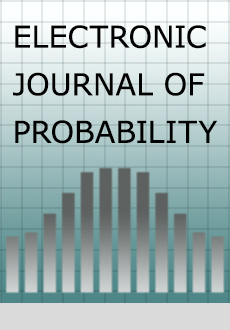Abstract
The best-response dynamics is an example of an evolutionary game where players update their strategy in order to maximize their payoff. The main objective of this paper is to study a stochastic spatial version of this game based on the framework of interacting particle systems in which players are located on an infinite square lattice. In the presence of two strategies, and calling a strategy selfish or altruistic depending on a certain ordering of the coefficients of the underlying payoff matrix, a simple analysis of the nonspatial mean-field approximation of the spatial model shows that a strategy is evolutionary stable if and only if it is selfish, making the system bistable when both strategies are selfish. The spatial and nonspatial models agree when at least one strategy is altruistic. In contrast, we prove that in the presence of two selfish strategies and in any spatial dimension, only the most selfish strategy remains evolutionary stable. The main ingredients of the proof are monotonicity results and a coupling between the best-response dynamics properly rescaled in space with bootstrap percolation to compare the infinite time limits of both systems.
Citation
Stephen Evilsizor. Nicolas Lanchier. "Evolutionary games on the lattice: best-response dynamics." Electron. J. Probab. 19 1 - 12, 2014. https://doi.org/10.1214/EJP.v19-3126
Information





